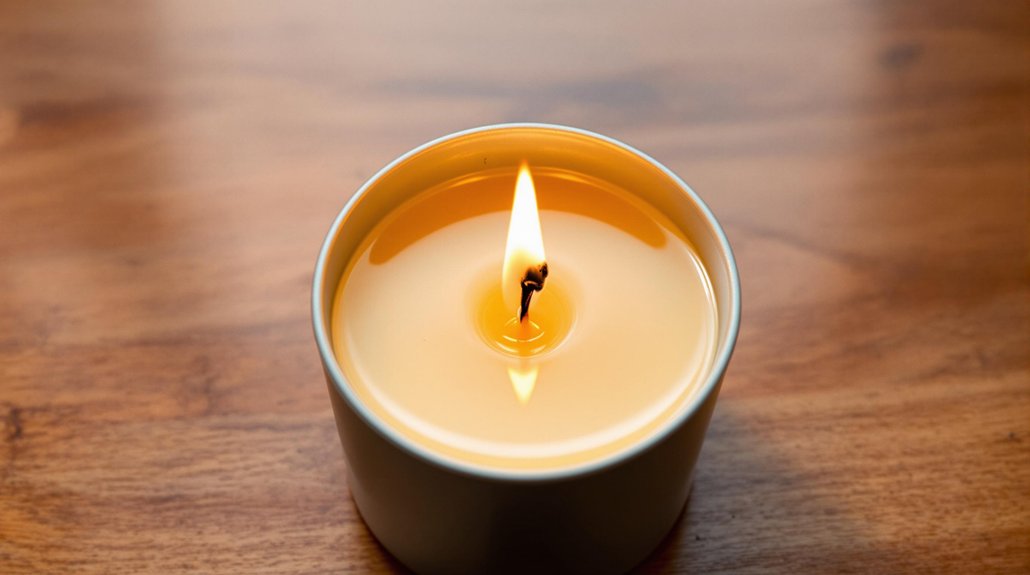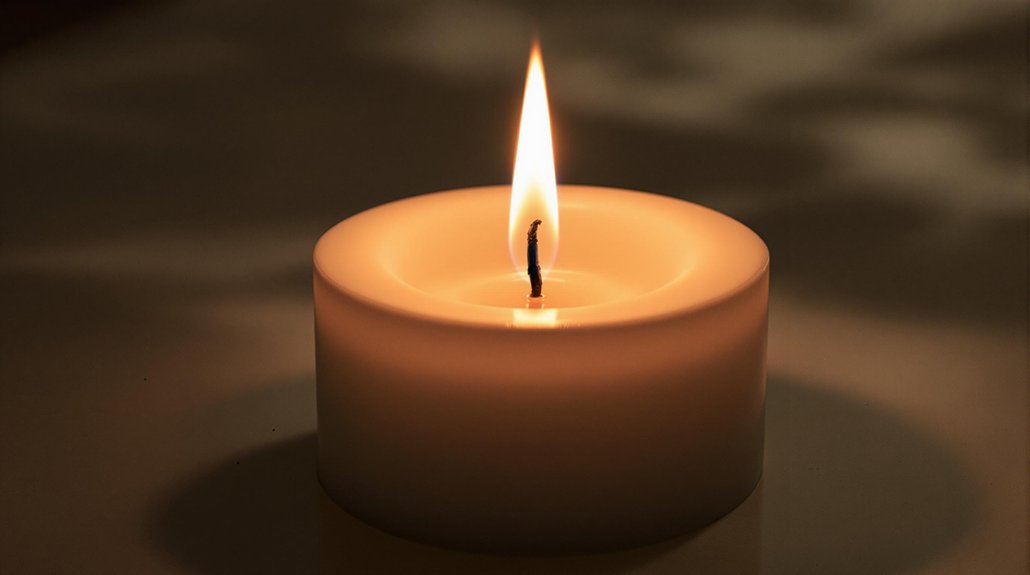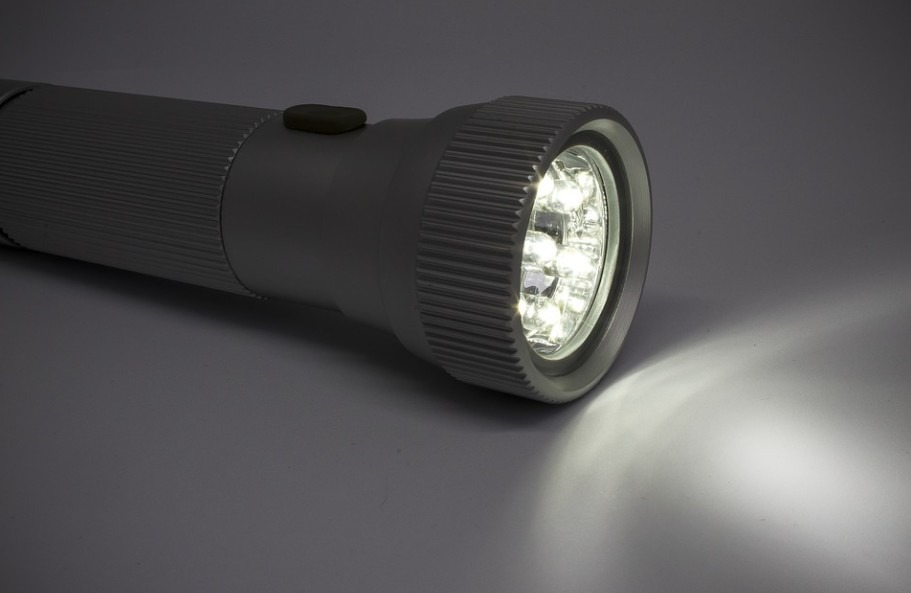What Makes a Candle Burn Evenly? The Science of Wick and Wax Balance

Ever lit a candle only to find it tunneling down the center or leaving wax stuck to the sides? A candle that burns unevenly isn’t just frustrating—it’s also wasteful. But there’s actually a fascinating science behind a smooth, consistent burn. The secret? It all comes down to the balance between the wick and the wax.
From wick thickness to wax composition, every detail plays a role in how your candle performs. In this article, we’ll break down what makes a candle burn evenly and how candle makers achieve that perfect harmony.
The Role of the Wick in Candle Burning
The wick is the heart of a candle's performance, ensuring a steady and efficient burn. It acts as a conduit, drawing melted wax up to the flame through capillary action. To achieve an even burn, it's essential to understand the role of wick length. If your wick is too long, the candle burns too quickly and unevenly, consuming excess wax and creating a large flame.
Conversely, a wick that's too short won't produce enough of a melt pool. Always trim the wick to about 1/4 inch before lighting, promoting a stable flame and reducing wax pooling. Opt for lead-free cotton wicks, as they burn cleaner and minimize soot, enhancing the candle's longevity and fragrance release.
Natural beeswax candles offer eco-friendliness and cleaner burns, making them a great choice for sustainable candle usage.
How Wax Composition Affects Burn Quality
When choosing a candle, understanding how wax composition affects burn quality can make a significant difference in your experience.
Candle wax types like soy wax and paraffin wax have unique properties that impact an even burn. Consider these factors:
- Melting Point: Paraffin wax melts between 120-150°F, ensuring a stable chemical reaction, while soy wax ranges from 120-180°F, possibly affecting consistency.
- Clean Burn: High-quality waxes produce less soot, keeping your air cleaner and supporting a steady flame.
- Vaporization: Efficient vaporization from heat from the flame prevents tunneling and uneven liquid wax pools.
- Wick Balance: The interplay of wax and wick size affects performance, so always trim your wick to maintain this balance.
These elements contribute to a candle's longevity and scent throw. In emergencies, liquid paraffin candles offer extended burn times without overwhelming scents, providing reliable lighting solutions during power outages.
Understanding the Combustion Process in Candles

When you light a candle, the wick generates heat that melts the surrounding wax into a liquid pool. This liquid wax travels up the wick through capillary action and vaporizes from the heat of the flame. The vaporized wax then reacts with oxygen, leading to combustion. This process results in light, heat, water vapor, carbon dioxide, and sometimes soot.
Attaining an even burn depends on the balance between wick size and melted wax amount. A properly sized wick guarantees a stable flame by maintaining the ideal fuel supply. If the wick's too large, it destabilizes the flame, while a small wick causes uneven burning.
Emergency candles with long burn times are specifically designed to ensure a stable and prolonged source of light, which is crucial during power outages and emergencies.
The Importance of Wick Size and Material
Choosing the right wick size and material plays an essential role in achieving a candle that burns evenly and efficiently. The wick size directly influences the amount of wax a burning candle can draw.
Here are a few key points to take into account:
- Wick Material: Cotton wicks offer a stable, even burn, while wood wicks add a rustic charm and crackling sound. Choose based on your desired candle experience.
- Melt Pool: An appropriate wick size guarantees a complete melt pool, avoiding tunneling and wasting wax of a candle.
- Heat of the Flame: The right size guarantees the flame's heat melts the wax evenly, preventing soot and uneven burning.
- Testing: Experiment with different wick sizes to match your fragrance blends and wax types for peak performance.
Factors Influencing Even Candle Burn
Getting a candle to burn evenly isn’t just about lighting the wick—it’s about balancing several important elements.

Wick size and material play a major role. A properly sized wick ensures the right amount of wax is drawn up into the flame, creating a steady burn without flickering or tunneling.
Wax type matters too. Different waxes, like paraffin or soy, have unique melting points and burn characteristics. Choosing the right one for your candle style is essential.
Wick trimming is another key step. Keeping the wick trimmed to about 1/4 inch before each use helps prevent large, smoky flames and encourages an even melt pool.
Environment affects performance as well. Drafts or shifting temperatures can cause uneven burning, so it's best to keep your candle in a calm, stable spot.
And finally, always let the wax melt all the way to the edges during the first burn. This helps prevent tunneling and sets the stage for a smooth burn every time.
Tips for Achieving a Consistent and Efficient Candle Burn
Burning a candle may seem simple, but a few small steps can go a long way in making sure it burns evenly, lasts longer, and performs at its best. Whether you're lighting a store-bought candle or one you've made yourself, following these tips will help you enjoy a steady flame and a full, even melt pool every time.
1. Trim the Wick Before Each Burn
Before lighting your candle, trim the wick to about 1/4 inch. This helps control the flame size, reduces soot buildup, and prevents the wick from mushrooming. A properly trimmed wick keeps the burn clean and consistent.
2. Let the First Burn Set the Tone
During the first burn, allow the wax to melt all the way to the edges of the container. This can take 1–3 hours depending on the candle's size. Reaching a full melt pool early on prevents tunneling and sets the candle up for even burns moving forward.
3. Keep Your Candle Away from Drafts
Avoid placing candles near open windows, fans, or vents. Air currents can cause the flame to flicker, which leads to uneven melting, excess soot, and wasted wax. A stable environment helps the candle burn as intended.
4. Match the Wick to the Candle Size and Wax Type
Different waxes and container sizes require specific wick types and sizes. A wick that’s too large can cause a big, smoky flame, while one that’s too small might drown in the wax. The right wick ensures efficient fuel absorption and a balanced melt pool.
5. Burn in Intervals
For longer candles, it’s best to burn in 2- to 4-hour intervals. This gives the wax time to melt evenly without overheating the container or burning too quickly. Short, frequent burns can lead to tunneling, while overly long burns may cause safety issues.
By keeping these tips in mind, you’ll get the most out of your candle—both in performance and lifespan.




